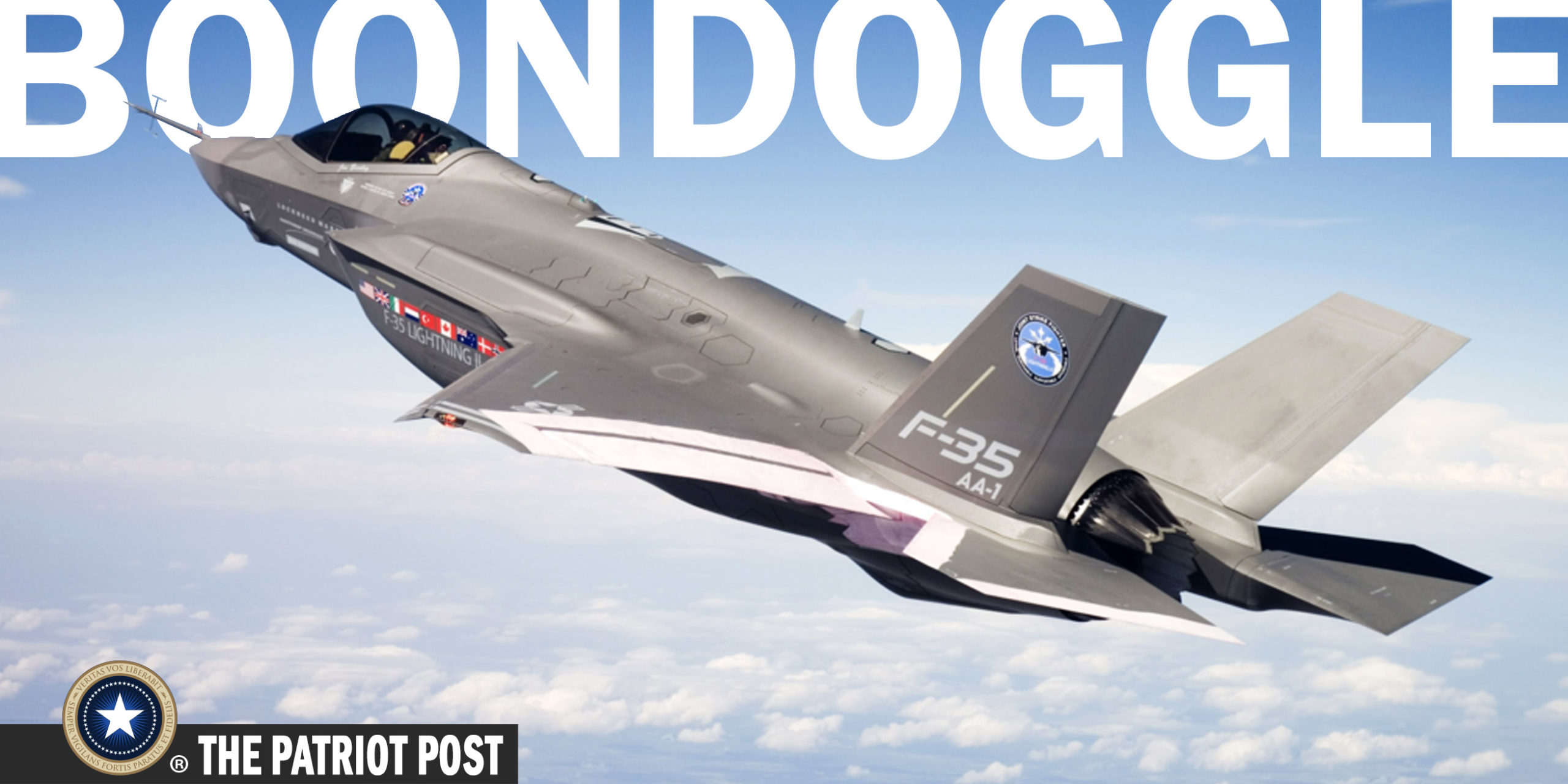
The GAO says F-35 is riddled with performance issues,
but Congress keeps calling for more spending
Andrew Lautz / Quincy Institute for Responsible Statecraft
(May 21, 2021) — If you had all the money in the world, would you pay nearly $2 trillion for a plane that couldn’t get off the ground half the time? Probably not, even if your means were endless. It may sound like an insane question, but it’s one that taxpayers and watchdogs are asking the U.S. military now after yet another nonpartisan government report found countless flaws with the F-35 Joint Strike Fighter aircraft.
A bit of background on the F-35 for readers uninitiated to perhaps the most expensive boondoggle in the $700-billion-per-year defense budget today: the program began in the 1990s and was, according to the Congressional Research Service, or CRS, intended to be “the last fighter aircraft program that DoD [the Department of Defense] would initiate for many years… expected to shape the future of both U.S. tactical aviation and the U.S. tactical aircraft industrial base.” Lockheed Martin, today the nation’s largest private defense contractor, was selected as the primary manufacturer of the aircraft in 2001, with Pratt and Whitney tapped to make the engine.

Troubled from the Start
The program has been troubled from the start, with numerous quality and safety concerns, doubts about the number of jobs promised and created by the program, trouble with the plane’s logistics software, and countless delays and design flaws. A new report from Congress’s nonpartisan taxpayer watchdog, the Government Accountability Office, sums up all these concerns while putting a fresh, updated bow on troubles with the multi-trillion-dollar project — which the Air Force Chief of Staff recently called a “Ferrari” for his service branch.
Let’s start with a big one: the estimated costs for maintaining and sustaining the F-35 over a 66-year cycle just went up —again — from $1.20 trillion in 2018 to $1.27 trillion today. That’s a $70-billion increase from just two years ago, or 6 percent. Since the 2012 sustainment estimate, the cost has gone up a whopping $160 billion, or 14 percent. Spread out over 66 years, that’s an average of $2.4 billion in added costs per year. And those costs may just continue to rise in future estimates.
Combine the new sustainment cost estimate with the estimated procurement costs for DoD, around $400 billion for 2,500 F-35 aircraft, and the total program cost for the F-35 right now sits at around $1.7 trillion over 66 years. That’s about $25.7 billion, per year, over the next 66 years. It’s also more than 40 percent of the total annual budget of$60.9 billion for the State Department and Foreign Operations in fiscal year 2021.

The F-35 and the Federal Budget
Here’s how the F-35 program alone stacks up against other components of the discretionary federal budget:
— F-35 Per-Year Program Costs (Current Estimate): $25.7 billion per year
— Entire Department of Agriculture (USDA) Budget: $23.4 billion (in fiscal year 2021; source)
— Entire Budget for Congress: $5.3 billion (in fiscal year 2021; source)
— Entire Budget for the Federal Judiciary: $7.7 billion (in fiscal year 2021; source)
— Entire Budget for the Internal Revenue Service (IRS): $11.9 billion (in fiscal year 2021; source)
— Entire General Fund Budget for the State of Maryland, Where Lockheed is Headquartered: $19.6 billion (in fiscal year 2021; source)
— Entire General Fund Budget for the State of Connecticut, Where Pratt and Whitney is Headquartered: $20.1 billion (in fiscal year 2021; source)
What do taxpayers get for this extraordinary investment in history’s most expensive plane? Well, according to GAO, the F-35 faces four major sustainment challenges in the years ahead, including 1) supply chain concerns such as spare parts delivery, 2) maintenance issues such as a lack of support equipment, 3) a malfunctioning and ineffective logistics software system that the military is currently in the process of completely replacing, and 4) underperforming engines.
That’s all, you say?

It Gets Worse
Dive deeper into these four issues and one understands the dire straits the F-35 program is in. While the program has made three improvements to long-running supply chain concerns, the lack of spare parts availability still makes it “impossible” for the Air Force to reach mission-capable targets of 90 percent for its variant of the aircraft, the F-35A.
Maintenance requirements and delays also make it impossible for the F-35A to reach its mission-capable targets; ditto the F-35B and F-35C variants for the Marine Corps and Navy, respectively. As mentioned above, the Autonomic Logistics Information System (ALIS) software for the F-35 is so bad — including “incorrect, missing, or corrupt electronic records,” that the program is starting from scratch with a new system called ODIN, or Operational Data Integrated Network. Sound bad? It gets worse: GAO says in their new report that a “myriad of technical and programmatic uncertainties [surround] the development of ODIN.” In other words, the incumbent logistics system is functionally deficient and its replacement may or may not be better.
Sadly, we haven’t even covered the largest maintenance issue facing the F-35 program: the engines made by Pratt and Whitney. According to GAO, 20 F-35 aircraft were unable to fly by the end of 2020 because of needed engine repairs. More troublingly, this backlog is projected to grow significantly over the next decade. By 2030, GAO estimates, the F-35 program will face an 800-engine deficit. This, the nonpartisan watchdog says, will be enough to ground 43 percent of the F-35 fleet — more than ten times the proportion of F-35 aircraft that cannot fly today.
Billions Spent on a Faulty Outcome
In other words, taxpayers have spent tens of billions of dollars — and are being asked to spend hundreds of billions more — on planes that cannot fly.
GAO often makes recommendations to the lawmakers the agency serves, and they have two that Congress should certainly include in the upcoming defense policy bill: 1) require DoD to report every year on its progress in making the F-35 more sustainable and affordable, and 2) make future F-35 procurement decision contingent on program progress in addressing all of the above concerns.
The second recommendation will be a harder one for Congress to implement, for dozens of lawmakers have a vested interest in the continuation of the F-35 program regardless of its performance issues. Take a look at this map and you’ll see why. The F-35 and its parts are made and assembled in states and congressional districts across the country, bringing with it direct and indirect jobs that can make it hard for lawmakers to rein in the $1.7-trillion program.
Now, as the Project on Government Oversight’s Mandy Smithberger has pointed out, “studies have consistently shown that military spending is a remarkably poor job creator compared to almost any other kind of spending.” That doesn’t mean mothballing the F-35 will be easy. The program even has its own bipartisan caucus in Congress, and last year 130 members of the House asked Congressional leaders to continue funding and supporting the aircraft. In other words, change will be difficult.
Hopefully, though, some courageous members of Congress will step up and ask for a halt in F-35 purchases as these significant concerns continue. Who would want to pay nearly $2 trillion for a plane that can’t fly?
Posted in accordance with Title 17, Section 107, US Code, for noncommercial, educational purposes.